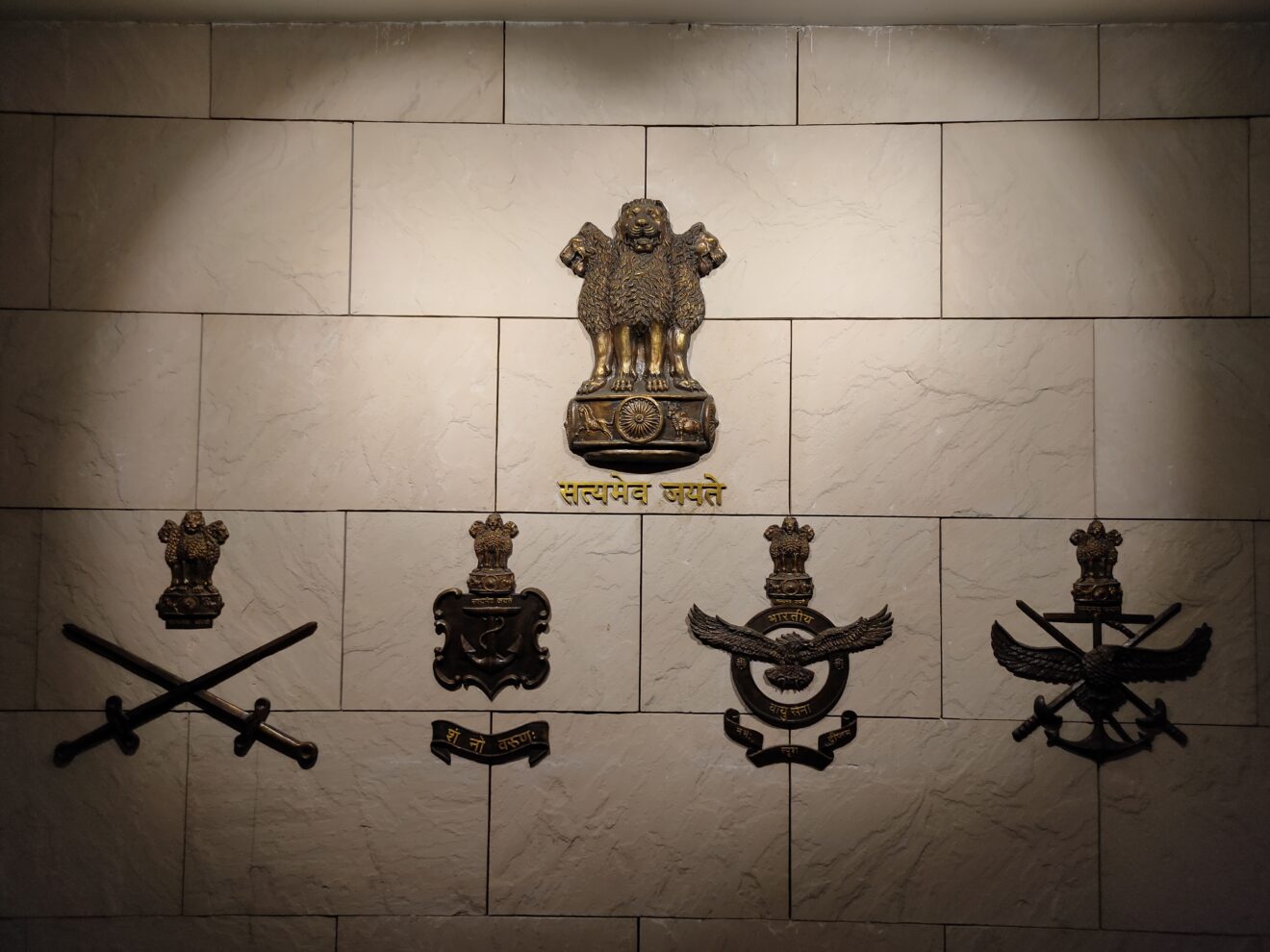Navy’s Firefighting Might: Indian Navy Joins Civil Agencies to Control Massive Blaze at EIPL, Visakhapatnam
Sea, Air, and Ground Resources Mobilised in High-Stakes Operation
BY DEFENCE JOURNALIST SAHIL | T.I.N. NETWORK
Visakhapatnam |
The skyline over Visakhapatnam’s industrial belt on 7 September was streaked with plumes of smoke and tongues of flame, as a fire broke out at East India Petroleum Limited (EIPL) chemical storage tankers. The sudden blaze, feared to have been triggered by a spark in volatile material stored in static tanks, threatened to escalate into a disaster of industrial proportions. In a densely populated city with a sprawling harbour, the fire posed not only a risk to infrastructure but also to human life and environmental safety.
In those tense hours, the coordinated response of civil firefighting units and the Indian Navy stood between chaos and containment.
The Spark That Turned into an Inferno
EIPL, located along the coastal industrial zone of Visakhapatnam, is a critical storage hub for petroleum and chemical products. The very nature of its operations — handling inflammable material — meant that any fire could quickly spiral out of control. Witnesses reported an initial explosion-like sound before thick smoke began billowing from the tanker area. Within minutes, the flames grew, reflecting off the waters of the nearby coast and drawing alarm across the city.
Local fire tenders rushed in, joined swiftly by industrial firefighting teams trained to handle hazardous material. Foam cannons roared into action, yet the intensity of the flames demanded more. That was when the Navy, whose Eastern Naval Command headquarters sits in Visakhapatnam, was called in to reinforce efforts.
Aerial Firefighting – Navy’s Seaking Steps In
On 8 September, as the fire continued to resist ground-based containment, the Navy deployed one of its most versatile assets — the Seaking helicopter. Operating out of INS Dega, the naval air station that serves as the backbone of Eastern Naval Command’s aviation operations, the Seaking was fitted with an underslung fire bucket capable of carrying large loads of water and foam.
The helicopter undertook multiple sorties over the blaze, carefully approaching the inferno’s epicenter and releasing torrents of suppressant over the flames. The combined impact of aerial drops and ground-based foam strikes brought the temperature under control, preventing the fire from leaping to adjacent tanks. Every sortie required precise coordination: the pilots had to hover low over intense heat, smoke, and unpredictable wind conditions, while ground teams marked target points for maximum impact.
“The air effort was critical in suppressing the flames,” a senior naval officer remarked. “Without aerial drops, the fire could have continued to rage, potentially spreading to adjoining storage facilities.”
Joint Operation, Shared Responsibility
The firefighting campaign was a textbook case of inter-agency cooperation. Alongside Navy resources, industrial agencies fielded their fire tenders, foam trailers, and emergency responders. The synergy between civil and military efforts showcased India’s growing emphasis on disaster preparedness, where the armed forces often act as the ultimate shield in moments of crisis.
By the evening of 8 September, the fire had been largely contained. Flames had subsided, temperatures had dropped, and focus shifted to residual dousing operations. Yet, even as firefighting continued, safety checks were put in place to monitor nearby facilities, preventing any reignition.
Why This Fire Mattered More
Beyond the immediate firefighting, the incident underlines the vulnerabilities of industrial zones along India’s eastern seaboard. Visakhapatnam is home to major oil storage depots, naval installations, and a vibrant civilian population. Any unchecked disaster in this zone could ripple far beyond its boundaries, disrupting maritime supply chains, affecting naval readiness, and endangering thousands of lives.
The Navy’s rapid involvement highlights the dual role the armed forces often play — guardians of national security and first responders in humanitarian or industrial crises. Just as they provide relief during floods, cyclones, and earthquakes, here they acted as firefighters in the sky, defending both people and industry.
Rising Preparedness in Maritime-Industrial Corridors
The Eastern Naval Command, headquartered in Visakhapatnam, has over the years expanded its disaster response footprint. From tsunami rescue operations to oil spill management, its assets and trained personnel have consistently complemented civil administration during emergencies. The EIPL fire is the latest instance of this readiness.
Analysts point out that such cooperation is set to become increasingly important. As India’s industrial infrastructure expands across coastal regions, the need for quick-response frameworks — blending civil firefighting resources with military capability — will be vital. The Navy’s deployment of aerial firefighting shows that doctrines are already adapting.
Looking Ahead
As of 8 September night, the blaze at EIPL had been brought under control, though final dousing and cooling operations were still in progress. Investigations into the cause of the fire will follow, with safety audits expected to ensure that such incidents do not recur.
For Visakhapatnam, the day will be remembered as one where disaster loomed large, only to be contained by grit, cooperation, and the reassuring presence of the Navy. For the Indian armed forces, it adds another chapter to their long record of serving beyond the battlefield.
Wherever lives are endangered — whether by flood, fire, or fury of nature — the Indian Navy, much like the Army and Air Force, stands ready to act. The Seaking helicopter hovering over blazing storage tanks is more than an image of firefighting. It is a symbol of resilience — of armed forces that are as committed to defending the people at home as they are to protecting the nation at sea.
नौसेना की अग्निशमन शक्ति: विशाखापट्टनम में ईआईपीएल टैंकर आग पर काबू पाने में नौसेना और नागरिक एजेंसियों की संयुक्त सफलता
समुद्र, आकाश और ज़मीन से संसाधन जुटाए गए – हाई-स्टेक्स ऑपरेशन
BY DEFENCE JOURNALIST SAHIL | T.I.N. NETWORK
विशाखापट्टनम |
7 सितंबर को विशाखापट्टनम के औद्योगिक क्षेत्र का आसमान धुएं की काली लपटों और आग की लाल ज्वालाओं से भर गया, जब ईस्ट इंडिया पेट्रोलियम लिमिटेड (EIPL) के रासायनिक स्टोरेज टैंकरों में भीषण आग भड़क उठी। आशंका जताई जा रही है कि स्थिर टैंकों में ज्वलनशील पदार्थों के बीच एक चिंगारी ने इस आग को जन्म दिया। यह अचानक लगी आग देखते ही देखते औद्योगिक आपदा का रूप ले सकती थी। एक घनी आबादी वाले शहर और विशाल बंदरगाह के बीच फैली यह घटना न केवल ढांचे और उद्योग बल्कि जनजीवन और पर्यावरण के लिए भी खतरा बन गई।
इन तनावपूर्ण घंटों में नागरिक अग्निशमन इकाइयों और भारतीय नौसेना की संयुक्त कार्रवाई ने अफरातफरी और आपदा के बीच संतुलन साधा।
चिंगारी से उठी दहशत
विशाखापट्टनम के तटीय औद्योगिक क्षेत्र में स्थित ईआईपीएल पेट्रोलियम और रासायनिक उत्पादों का अहम स्टोरेज हब है। यहां का काम ही ज्वलनशील पदार्थों से जुड़ा है, ऐसे में किसी भी आग का तेजी से फैलना तय था। चश्मदीदों के मुताबिक पहले एक धमाका-सा हुआ और फिर टैंकर क्षेत्र से काला धुआं उठता दिखा। कुछ ही मिनटों में आग की लपटें तेज हो गईं और शहरभर में चिंता का माहौल फैल गया।
स्थानीय फायर टेंडर तुरंत पहुंचे, औद्योगिक अग्निशमन टीमों ने भी मोर्चा संभाला। फोम कैनन दहाड़ने लगे, लेकिन आग की तीव्रता इससे कहीं अधिक थी। तभी मदद के लिए पूर्वी नौसैनिक कमान की भूमिका सामने आई।
आकाश से जंग – नौसेना का सीकिंग हेलीकॉप्टर मैदान में
8 सितंबर को जब जमीनी कोशिशों से भी आग पर पूरी तरह काबू नहीं पाया जा सका, तब नौसेना ने अपने सबसे भरोसेमंद संसाधन – सीकिंग हेलीकॉप्टर – को मैदान में उतारा। आईएनएस डेगा एयरबेस से उड़ान भरते हुए इस हेलीकॉप्टर को अंडरस्लंग फायर बकेट से लैस किया गया था, जो पानी और फोम की भारी मात्रा ले जाने में सक्षम है।
हेलीकॉप्टर ने आग के ऊपर कई बार चक्कर लगाया और लपटों के केंद्र पर पानी व फोम गिराया। इन हवाई हमलों और जमीनी फोम स्ट्राइक्स के संयोजन ने आग के तापमान को कम किया और लपटों को पास के टैंकों में फैलने से रोका। हर sortie में पायलटों को तेज धुएं, गर्मी और बदलती हवाओं के बीच सटीकता बनाए रखनी पड़ी, जबकि जमीनी टीमें उन्हें लक्ष्य स्थल चिन्हित करती रहीं।
एक वरिष्ठ नौसैनिक अधिकारी ने कहा, “हवाई प्रयास निर्णायक साबित हुआ। यदि सीकिंग हेलीकॉप्टर का इस्तेमाल नहीं होता, तो आग और भी टैंकों में फैल सकती थी।”
साझा जिम्मेदारी, संयुक्त अभियान
यह अभियान आपसी सहयोग का बेहतरीन उदाहरण था। नौसेना के संसाधनों के साथ औद्योगिक एजेंसियों ने भी अपने फायर टेंडर, फोम ट्रेलर और आपातकालीन टीमों को झोंक दिया। नागरिक और सैन्य एजेंसियों की इस साझेदारी ने दिखाया कि भारत किस तरह आपदा प्रबंधन में तेजी से तैयारियों को मजबूत कर रहा है।
8 सितंबर की शाम तक आग को काबू में कर लिया गया। हालांकि बची-खुची लपटों को बुझाने और आस-पास के क्षेत्रों में सुरक्षा जांच जारी रही।
क्यों यह आग अधिक महत्वपूर्ण थी
इस घटना ने भारत के पूर्वी तट पर स्थित औद्योगिक क्षेत्रों की कमजोरियों को उजागर किया। विशाखापट्टनम में बड़े तेल भंडार, नौसैनिक ठिकाने और विशाल नागरिक आबादी है। यहां की किसी भी अनियंत्रित आपदा का असर न केवल शहर बल्कि समुद्री आपूर्ति श्रृंखलाओं और राष्ट्रीय सुरक्षा पर भी पड़ सकता था।
नौसेना की त्वरित भूमिका ने एक बार फिर साबित किया कि सशस्त्र बल केवल राष्ट्रीय सुरक्षा के प्रहरी ही नहीं, बल्कि मानवीय और औद्योगिक संकटों में भी सबसे पहले आगे आने वाले संरक्षक हैं।
बढ़ती तैयारियां और बदलते सिद्धांत
पूर्वी नौसैनिक कमान ने वर्षों से आपदा प्रतिक्रिया में खुद को साबित किया है। सुनामी राहत, तेल रिसाव नियंत्रण और बाढ़ बचाव में इसकी भूमिका अहम रही है। ईआईपीएल की आग ने इस तैयारियों की प्रासंगिकता को और बढ़ा दिया।
विशेषज्ञ मानते हैं कि आने वाले समय में औद्योगिक और सैन्य एजेंसियों का यह समन्वय और जरूरी होगा, क्योंकि तटीय क्षेत्रों में औद्योगिक ढांचा लगातार बढ़ रहा है। हवाई अग्निशमन जैसी क्षमताएं इस बदलाव का प्रमाण हैं।
आगे की राह
8 सितंबर की रात तक आग को काफी हद तक काबू कर लिया गया, हालांकि शेष कूलिंग और डाउजिंग ऑपरेशन अभी जारी रहे। अब जांच एजेंसियां कारणों का पता लगाएंगी और सुरक्षा ऑडिट होंगे ताकि ऐसी घटनाएं दोबारा न हों।
विशाखापट्टनम के लिए यह दिन हमेशा याद रखा जाएगा, जब एक संभावित आपदा को हिम्मत, सहयोग और नौसेना की उपस्थिति ने रोका। भारतीय नौसेना के लिए यह उसके उस लंबे इतिहास में एक और अध्याय है, जिसमें उसने बार-बार साबित किया है कि उसकी ताकत केवल समुद्र की रक्षा तक सीमित नहीं, बल्कि लोगों की सुरक्षा में भी है।
सीकिंग हेलीकॉप्टर का आग की लपटों पर मंडराना केवल अग्निशमन का दृश्य नहीं था — यह उस संकल्प का प्रतीक था कि भारतीय सशस्त्र बल हर परिस्थिति में अपने नागरिकों के साथ खड़े हैं।














Add Comment